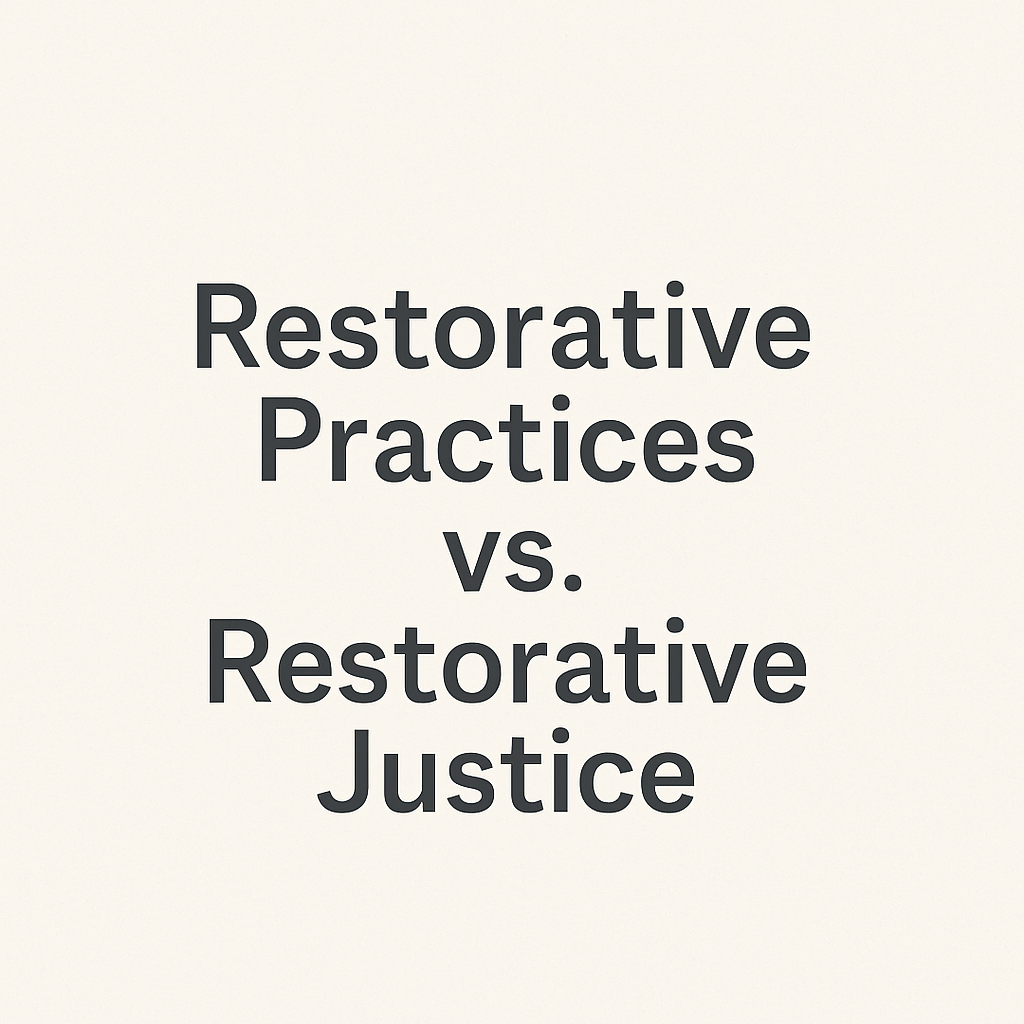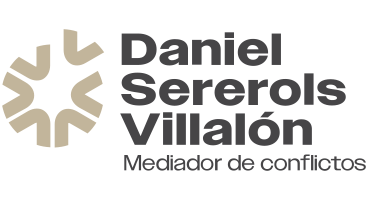
28 Sep Restorative and Restorative Practices
What is Restorative Justice? What are Restorative Practices?
Restorative Justice vs Restorative Practices: a necessary distinction
In debates on mediation, conflict resolution and social transformation, the terms restorative justice and restorative practices are often used interchangeably. However, it is essential to distinguish them, especially in Catalonia, where the Administration of Justice is an exclusive competence of the State, and any reference to the concept of “justice” requires strict precision.
What is Restorative Justice?
Restorative justice is a paradigm that complements the traditional criminal system. Its goal is to repair the harm caused by crime and to restore, as far as possible, the relationships between victim, offender and community.
Its essence lies in the fact that the offender can personally repair the harm caused, and that the victim can express what is needed to feel truly repaired.
Its main features are:
-
Recognition of harm and active involvement of all parties.
-
Participation of accredited facilitators or mediators.
-
Seeking material or symbolic reparation agreements.
-
Possibility of coexisting with traditional sanctions.
Legally, in Spain, Law 4/2015 on the Statute of the Victim of Crime already provides for criminal mediation as a restorative justice mechanism. In Catalonia, juvenile courts have been pioneers in its application, following the principles of the Criminal Code and the Civil Code of Catalonia, particularly regarding reparation and reintegration.
It should be noted that in 2000 the Adult Restorative Justice Service of the Department of Justice (initially known as the Adult Criminal Mediation Service) was officially established, and it continues to operate successfully today. Its beginnings included a team of pioneering professionals: Núria Villanueva, Ansel Guillamat, Joan Sendra, Núria Calderer, Montse Martínez and myself, who worked across Catalonia to implement this model.
Case law has also recognised the value of these practices: the Supreme Court has confirmed that restorative agreements may be considered as mitigating circumstances in criminal judgments, provided procedural safeguards are respected.
In this context, it is clear that restorative justice can only be promoted and supervised within the judicial framework or with the endorsement of the Administration of Justice.
What are Restorative Practices?
Restorative practices, on the other hand, are tools and methodologies that apply restorative principles in various settings: schools, communities, businesses, prisons or families.
Common examples include:
-
Restorative circles.
-
Community conferences.
-
Restorative questions and structured dialogues.
-
Preventive interventions in educational and workplace contexts.
These practices have a primarily preventive and educational function. They do not replace judicial action but help strengthen coexistence and prevent conflict escalation before it reaches the criminal justice system.
Key Differences
Restorative Justice vs Restorative Practices
-
Scope: Criminal and judicial system vs Education, community, business, family.
-
Function: Repair of legally recognised crimes vs Prevention and management of everyday conflicts.
-
Supervision: Always under the authority of the Administration of Justice vs Does not require judicial intervention.
-
Safeguards: Procedural rights and legal guarantees vs Dialogue and social consensus.
In summary: restorative justice only makes sense within the judicial and criminal sphere, whereas restorative practices can be implemented in multiple social and institutional environments.
References: Jean Schmitz and Anna Vall Rius
The renowned expert Jean Schmitz has been a key voice in the international dissemination of restorative justice and restorative practices, training professionals and communities in Europe and Latin America.
In Catalonia, Anna Vall Rius, lawyer, mediator and director and founding partner of Logos Media, has been one of the main promoters of the training and implementation of restorative practices, collaborating with academic institutions, professional associations and public bodies.
Her work has been decisive in differentiating restorative justice from restorative practices both conceptually and practically, avoiding confusions that could lead to jurisdictional or legal issues.
Upcoming event in Barcelona with Jean Schmitz
On November 5 and 6, 2025, Barcelona will host a unique event for professionals interested in mediation, coexistence and positive conflict management.
The Col·legi Oficial de Doctors i Llicenciats en Filosofia i Lletres i en Ciències de Catalunya (CDL) and Logos Media are organising the workshop:
“Restorative Practices: Learning by doing circles (Restorative Circles)”
The workshop will be led by the renowned expert Jean Schmitz and will be a unique opportunity to learn first-hand practical tools applicable in educational, community and institutional contexts.
Conclusion
The Generalitat is right to be precise: justice can only be exercised under the responsibility of the Administration. But this does not diminish the value of restorative practices, which are powerful instruments for prevention and coexistence.
Clarifying this difference is not just a semantic issue but also a guarantee of institutional respect and effective application of these tools in Catalan society.
Daniel Sererols Villalón
📞 Tel. +34 661 463 306
📧 daniel@mediadorconflictos.com
